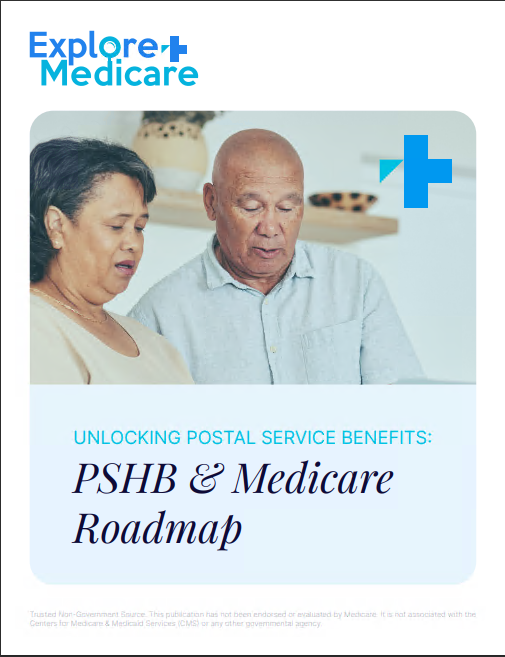Introduction to PSHB
The Postal Service Health Benefits (PSHB) program is a healthcare benefits program designed specifically for employees and retirees of the United States Postal Service (USPS). Established to provide comprehensive healthcare coverage, PSHB offers a range of plans tailored to meet the diverse needs of USPS personnel and retirees. Understanding the fundamentals of PSHB is essential for individuals seeking to make informed decisions about their healthcare coverage options.
Origins and Purpose of PSHB
- Historical Background: PSHB traces its origins to the establishment of healthcare benefits for USPS employees and retirees under the Postal Reorganization Act of 1970. This legislation aimed to modernize the postal system and address the healthcare needs of postal workers.
- Employee Health Benefits: PSHB was created to provide USPS employees and retirees with access to affordable and comprehensive healthcare coverage, including medical, dental, vision, and prescription drug benefits.
- Stability and Security: The primary purpose of PSHB is to ensure the stability and security of healthcare benefits for USPS personnel and retirees, enabling them to access quality healthcare services without financial hardship.
Integration of PSHB with Medicare
The integration of the Postal Service Health Benefits (PSHB) program with Medicare Part B stands as a pivotal feature aimed at optimizing healthcare coverage for USPS annuitants. By aligning PSHB coverage with Medicare benefits, participants can leverage the contributions made through Medicare taxes during their employment tenure, potentially reducing overall healthcare expenses while enhancing the value of their benefits.
Previously, the Postal Service contributed employer taxes to support Medicare, yet its annuitant healthcare program didn’t fully capitalize on Medicare benefits. However, under the revised framework, USPS can now mandate Medicare enrollment for eligible annuitants, ensuring the program leverages Medicare like other employers. This strategic integration fortifies the Postal Service’s financial standing, reinforcing its capacity to fulfill its crucial public service mandate.
Enrolling in the PSHB Program
As mandated by the Postal Service Reform Act of 2022 (PSRA), the Office of Personnel Management (OPM) has spearheaded the implementation of the new PSHB Program. Effective January 1, 2025, this initiative is set to revamp healthcare coverage for USPS employees and retirees, administered within the Federal Employees Health Benefits (FEHB) Program framework.
During the open season period from November 11, 2024, to December 9, 2024, participants must actively select a PSHB plan or risk automatic enrollment in a comparable plan. Detailed information regarding plan options and premiums will be available closer to the open season, ensuring beneficiaries can make well-informed decisions about their healthcare coverage.
Medicare Integration and Enrollment Requirements
While enrollment in Medicare Part B isn’t mandatory during USPS employment, certain provisions apply upon retirement. Annuities retiring on or before January 1, 2025, or active employees aged 64 or older by this date are exempt from mandatory Medicare enrollment for PSHB coverage continuation.
However, retirees under 64 years old as of January 1, 2025, or those retiring after this date at any age below 64, are generally required to enroll in Medicare Part B upon retirement eligibility. Exceptions to this requirement exist, such as residing outside the United States, receiving healthcare benefits from the Department of Veterans Affairs, or qualifying for services from the Indian Health Service.
PSHB Coverage for Family Members
The eligibility for PSHB coverage for family members aligns with the primary enrollee’s status. If the primary enrollee is mandated to enroll in Medicare Part B, dependent family members follow suit upon eligibility. Conversely, if the primary enrollee isn’t obligated to enroll in Medicare Part B, dependent family members are similarly exempt.
Maximizing Value Through Medicare Enrollment
Upon reaching age 65, individuals become eligible to enroll in Medicare, with Part A covering inpatient hospital care typically offered at no premium cost. However, Medicare Part B, encompassing doctor visits and essential medical services, entails a monthly premium. Active employees turning 65 may defer Medicare Part B enrollment until retirement, while retirees have an eight-month individual enrollment window starting from their retirement date.
Upon Medicare eligibility, participants may adjust their PSHB enrollment accordingly, potentially accessing plans offering incentives like reduced prescription drug copays. This strategic alignment with Medicare can yield substantial savings on out-of-pocket healthcare expenses, further enhancing the overall value of healthcare coverage for USPS personnel and retirees.
Eligibility and Enrollment
- Employee Eligibility: USPS employees are generally eligible for PSHB benefits upon meeting certain employment criteria, including working full-time or part-time hours and completing a probationary period.
- Retiree Eligibility: Retirees who have met the eligibility requirements for retirement benefits under the USPS retirement system are typically eligible for continued participation in PSHB plans.
- Open Enrollment Periods: USPS employees and retirees have the opportunity to enroll in or make changes to their PSHB coverage during annual open enrollment periods or qualifying life events, such as marriage, birth of a child, or loss of other coverage.
Managing PSHB Coverage
- Plan Selection: USPS employees and retirees can select PSHB plans that best meet their healthcare needs and budgetary constraints during open enrollment periods or qualifying life events.
- Utilization of Benefits: Beneficiaries should actively utilize their PSHB benefits by seeking preventive care, scheduling regular check-ups, and accessing necessary medical services and treatments as prescribed by healthcare providers.
- Understanding Coverage: It’s essential for beneficiaries to understand the coverage details, limitations, and exclusions of their chosen PSHB plans to avoid unexpected out-of-pocket expenses and maximize the value of their benefits.
- Seeking Assistance: USPS employees and retirees can seek assistance from Postal Service HR departments, benefits specialists, licensed insurance agents, and online resources to navigate PSHB enrollment, plan selection, and coverage management.
Conclusion: Empowering USPS Personnel and Retirees
PSHB plays a vital role in providing USPS employees and retirees with access to comprehensive healthcare coverage. By understanding the origins, purpose, eligibility criteria, key features, and management strategies of PSHB plans, beneficiaries can make informed decisions about their healthcare coverage options and effectively utilize their benefits. With the support of PSHB, USPS personnel and retirees can enjoy greater peace of mind knowing that their healthcare needs are being met with quality and affordability.
Ready to explore your options under the Postal Service Health Benefits (PSHB) program? Connect with Postal Service HR departments, benefits specialists, or licensed insurance agents for personalized guidance on selecting the right PSHB plan for your healthcare needs. Make informed decisions about your healthcare coverage and enjoy peace of mind with PSHB.

